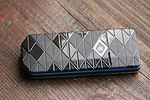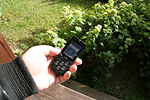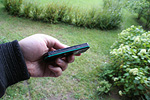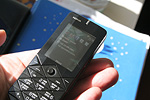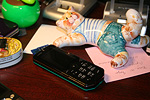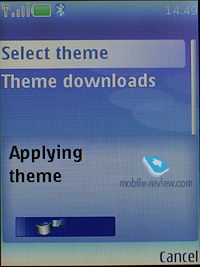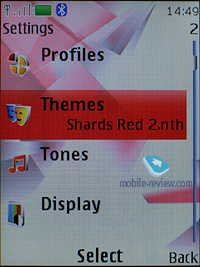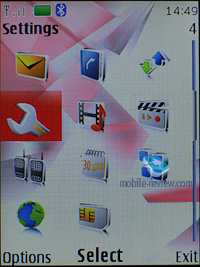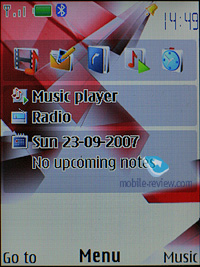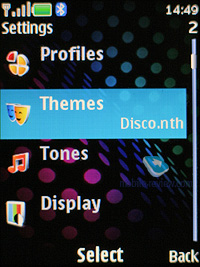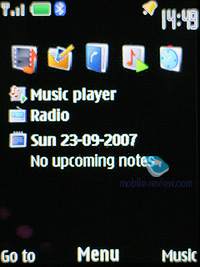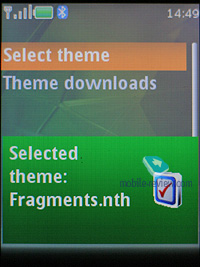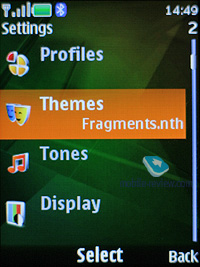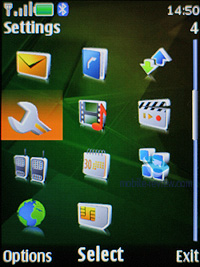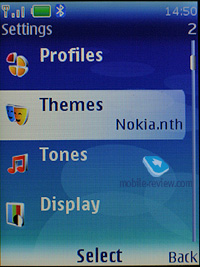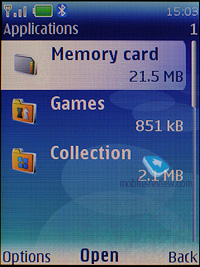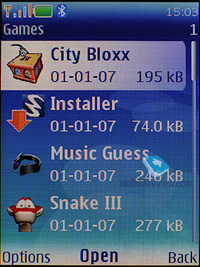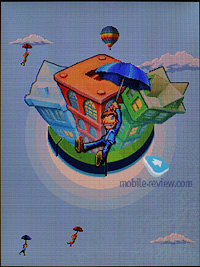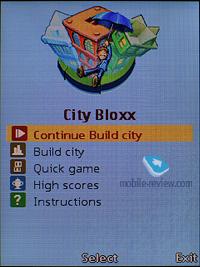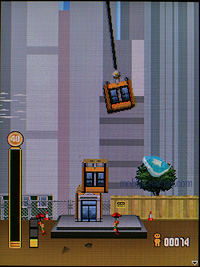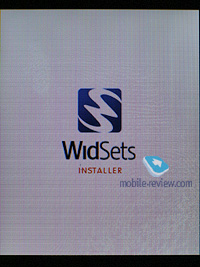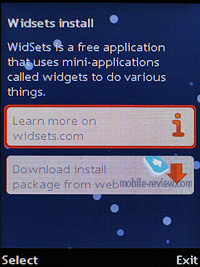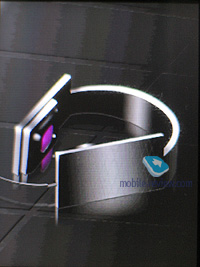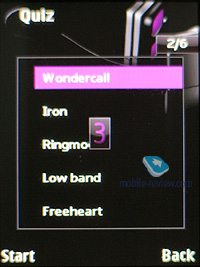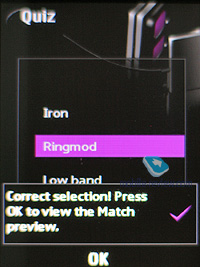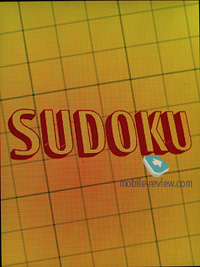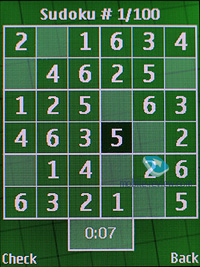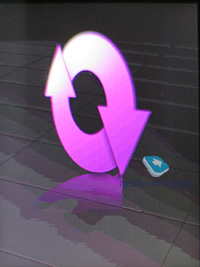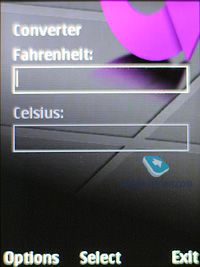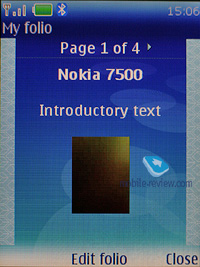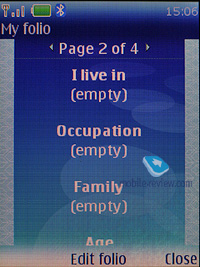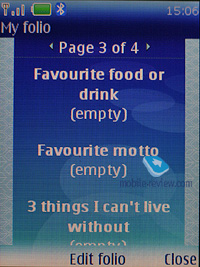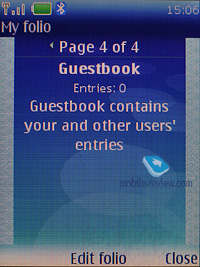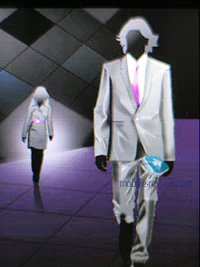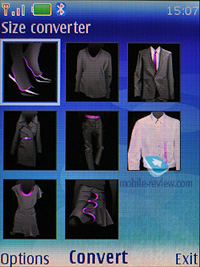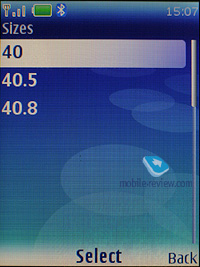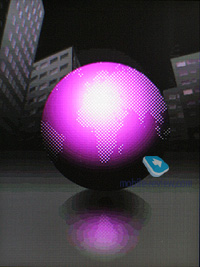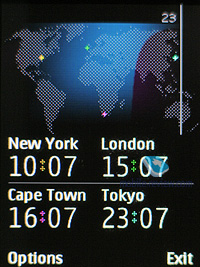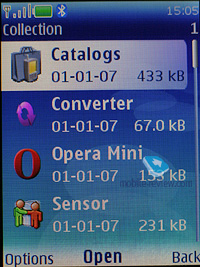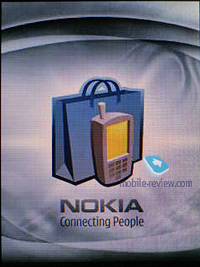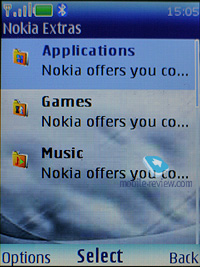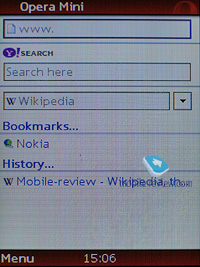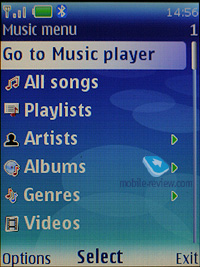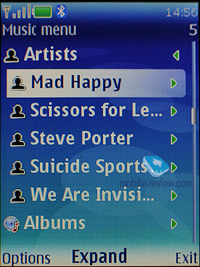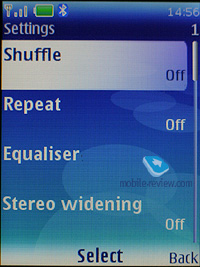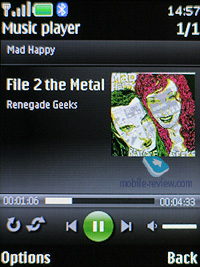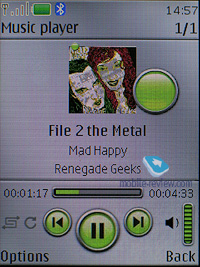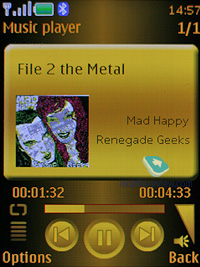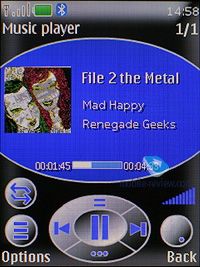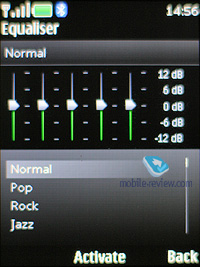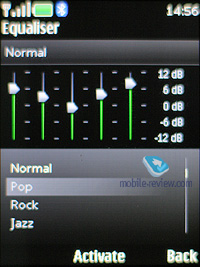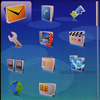|
|
Review of GSM-handset Nokia 7500 Prism
Live photos of the Nokia 7500 Prism
Table of contents:
- Positioning
- Design, size, materials used
- Display
- Memory
- Keypad
- Battery
- USB, Bluetooth
- Camera
- Themes, applications, games
- Music department
- Performance
- Nokia 7500 Prism versus Nokia 7900 Prism
- Competition
- Impressions
Sales package
- Handset
- Two exchangeable colour accents
- Battery (BL-4B)
- Charger (AC-3)
- Stereo-headset (HS-47)
- Wrist band
- User Guide
- microSD 512 Mb memory card
Positioning
The 7500 Prism is a designer solution for the mass market. For some regions this word combination may sound ridiculous, for instance in Russia if you call something a “designer phone”, then its price tag rockets to the stars. But is this justified? To my mind, design is not something that directly drives pricing policies for the end products. For the most part, a sophisticated design adds some extra value to the solution in question, which is included in its price, but that's pretty much about it. The handsets born as the result of the collaboration between Bang&Olufsen and Samsung are unique, as far as design is concerned, cost a small fortune, but are nearly impossible to handle. It is a good example of a product that sways towards style over substance – with all other aspects being ignored or simply left out.
Or let’s look at the Nokia 8800’s design – it is one shining phone, isn’t it? The majority of its owners close their eyes to its meager functionality, forgive this weakness, and all thanks to the materials used and the way it feels in the hand. In other words, the design is the cornerstone of this phone, making you overlook a lot of things. But can we compare the designs of the Nokia 7500 Prism and the Nokia 8800? By and large, yes, however it will feel made-up anyway, since the main value to any design is being not like other models available on the market. At any rate, this is what we mean by a ‘designer product’. From this point of view, such comparison is pretty much pointless, just like most beauty contests.


The positioning of the Nokia 7500 in the mid segment price-wise (200-230 Euro), makes this handset a newsworthy phenomenon on the market. Deliberately or not, its shapes feel as quaint as Vertu’s and remind you of luxury solutions. This allusion to the most expensive phones isn’t particularly on the surface, which makes it so much stronger conceived by the majority of users.

Like any solution with its own face, standing out from the drove, this model can be either loved or hated at first sight. No “if’s” or “so-so”. That’s why you will hear completely opposite opinions on the 7500, and every one of them has the right to live. Basically, it can’t exist outside the user’s social group and environment: in some places it will turn heads, in others – provoke frustration or misunderstanding. It is a really tricky decision for consumers – try to figure out how people around you will react to this phone. In fact, this is THE problem of the Nokia 7500 Prism.

The Nokia’s range will feature a whole lot of solutions similar to the Nokia 7500 Prism functionality-wise – the already debuted Nokia 6500 is one of them with its staid design and a tad more punch on offer. The company has exercised a proven method by releasing a steeper designer solution and then saturating its line-up with resembling solutions with more versatile curves and lines and comparable feature packs. If you remember the Nokia 7210 and the Nokia 6610, the situation was pretty much identical - the former got to the market faster, yet maintained the image of a pricey model, while the Nokia 6610 became a mass-market solution. That’s why if you have no strong feelings for the Nokia 7500’s design, but still would like to have S40 5th edition at your disposal, then you should better wait for other opportunities (models).
Back to the table of contents >>> Design, size, materials used
The key aspect in the Prism’s profile – the handset’s casing is actually composed of tiny prisms that form its shape. On the face of it, the shell seems to be quite angular, and its sharp lines make it look somewhat awkward to use. But that’s only what it appears to be – in practice it is pretty much comfortable to use and definitely doesn’t have any protruding sharp edges whatsoever.


The main material used is glossy plastic, which does a ‘great’ job picking up grease and dirt from your hands, but thanks to the numerous facets the Prism consists of, fingerprints remain inconspicuous across the surface except for the display. The display cover, which is also quite unusual, has two facets, which looks great and adds a nice visual touch to the Prism, yet in some environments this display setup is hard to read because of the glaring facets.



The plastic quality is average – it is by no means premium-quality, yet better than cheap handsets. The Prism measures up at 109x43.9x14.4 mm, weight – 83 grams. The handset can be carried as you please, it also very palm-friendly.


Back to the table of contents >>> Display
The Prism utilizes a 240x320-pixel (2 inches, 31x41 mm) QVGA display that shows up to 16 million colors (TFT), which are all bright and crisp. There are no display brightness settings available. Because of the curved display cover design, it tends to glare in certain environments.


The screen can accommodate up to 10 text lines (SMS-mode, small font settings) and up to 3 service lines. For WEB, SMS and phonebook you can modify the font size, picking one of the three available. These fonts are pretty well-draw and a cinch to read.


Back to the table of contents >>> Memory
The handset presents its user with around 30 Mb of storage space, which isn’t all that much. The memory expansion slot sits right under the battery, which automatically rules out the possibility of hot swapping memory cards. Memory expansion format – microSD, top supported volume – 2 Gb.
Back to the table of contents >>> Keypad
The buttons are forged in the trade mark prism-esque style and being very easy to press, they are a breeze to handle. However the overall ergonomics level of this keypad is around average, which has more to do with the mechanics, rather than the form of the keys. The protruding facets my wear off as time goes by, so you will see the transparent plastic underlayer. When we got our mitts on the handset, the left soft key was already worn out. All buttons are lit in white, so the key captions are well-visible in various environments.


The joystick, which is pretty much comfortable to use, has an indicator in it, that glows in white if you have missed calls or other events awaiting your further actions.

Back to the table of contents >>> Battery
The handset employs a 700 mAh Li-Ion battery (BL-4B), as the manufacturer claims it can keep the Prism up and running for 280 hours in standby or provide up to 2,8 hours of talk time. In conditions of Moscow networks, the handset’s battery life averaged 2 days at 2-3 hours of music or radio, up to 30 minutes of GPRS/EDGE (mail, web) and about an hour of calls. Basically, should you be heavy on its goodies, the Prism will last around 2 days, and when you are in calls-only mode, it will stay online from 2 to 3 days. It takes the phone 2 hours to charge up from empty to full. With the top volume settings on and the standard earphones plugged in, the Prism runs non-stop 8.5 hours in the music mode.

Back to the table of contents >>> USB, Bluetooth
USB. Like the models before it, the Prism houses a miniUSB socket, whereas the latest generation comes installed with a microUSB slot. The port is located on the bottom end and all the accessories released for this connector type are fully compatible with this model. On a successful data cable connection the handset doesn’t start recharging itself, though.
The manufacturer claims USB 2.0 support, while in the USB Mass Storage mode the Prism’s average data transfer speed makes 300-350 Kb/s, in contrast to the Nokia 6500 Classic, which is almost twice as fast.
When connected you can pick USB Mass Storage, PC Studio (Nokia Mode) or modem mode. It has no support for MTP, though, so you will have to upload all your tunes manually.
Bluetooth. The 7500 Prism comes equipped with EDR-enabled version 2.0. The device sports the following profiles:
- Dial-Up Networking Profile
- Generic Access Profile
- Generic Object Exchange Profile
- Object Push Profile
- Serial Port Profile
- Handsfree Profile
- Headset Profile
- Synchronization Profile
- Basic Image Profile
- File Transfer Profile
- HID (host) Profile
- Stereo Advanced Audio Distribution Profile
- Advanced Audio/Video Remote Conference Profile
- A2DP
The Bluetooth implementation is, as always though, nothing to complain about, on top of that the Prism’s Bluetooth user interface is no different from the Nokia 6300. We encountered no issues with handling this type of connections. The stereo-headset also works fine.
Back to the table of contents >>> Camera
This handset has 2mpx camera (CMOS) which is not that much by today’s standards, but it is still pretty much sufficient. Nokia has decided not to bet on the camera part, it is more of an optional feature here. This is why camera’s module picked for 7500 Prism is one of the cheapest units out there, and provides average quality, if not to say meagre. In poor light conditions the camera refuses to work properly, exposure time increases and every movement of your hand made within that time span leads to a blurry image in the end. By ‘dark conditions’ we mean a summer day on the street where there’s not much of sunlight. And while indoors it gets even worse. In case you regard cameras embedded into handsets as mere makeweights – it is pretty much tolerable, but at the same time the handset was unable to reach at least Sony Ericsson’s K750i level.

The following image resolutions are supported:
- 1600x1200;
- 1280x960;
- 800x600;
- 640x480;
- 320x240;
- 160x120.
Two low resolutions were added for creating photos that would fit as wallpapers for display. Three JPEG compression types are supported: basic, normal, high. Considering the fact that photos do not blow your imagination away with quality, it is better to employ the maximum quality settings, it won’t come worse than it is.
The shutter sound can be disabled, there is 8x digital zoom, but no reason to use it. You can save photos in the internal memory.
Some effects can be applied to the already made photos, should they be used initially – it is up to you to decide. Such effects as False Colours, Greyscale, Sepia, Negative, Solarize are available.
For those who love to shoot a lot of photos at once, there is special mode for you – camera makes up to 3 shots at a time, all settings remain similar to those selected for the single shot mode, including the resolution. There is auto-timer for self-shots.
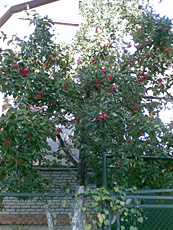 |
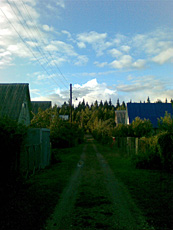 |
| (+) maximize, 1200x1600, JPEG |
(+) maximize, 1200x1600, JPEG |
 |
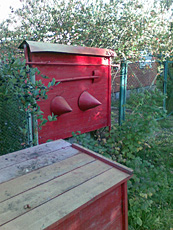 |
| (+) maximize, 1200x1600, JPEG |
(+) maximize, 1200x1600, JPEG |
 |
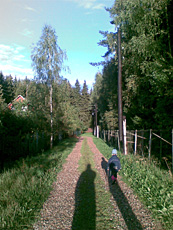 |
| (+) maximize, 1200x1600, JPEG |
(+) maximize, 1200x1600, JPEG |
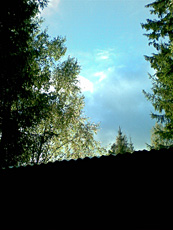 |
 |
| (+) maximize, 1200x1600, JPEG |
(+) maximize, 1200x1600, JPEG |
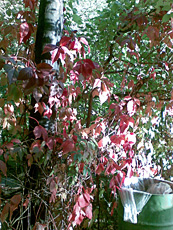 |
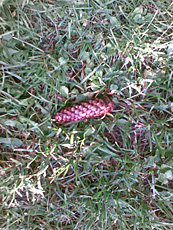 |
| (+) maximize, 1200x1600, JPEG |
(+) maximize, 1200x1600, JPEG |
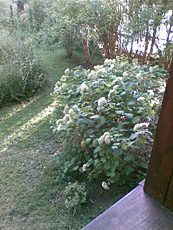 |
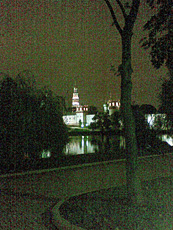 |
| (+) maximize, 1200x1600, JPEG |
(+) maximize, 1200x1600, JPEG |
 |
 |
| (+) maximize, 1200x1600, JPEG |
(+) maximize, 1200x1600, JPEG |
Video. The handset allows recording video in 3GP format, available resolution – 128x96 pixels, or 176x144 pixels. Recording quality is divided into three levels. You can limit a recording’s length, but it also can be limitless, until memory runs out (memory card or internal memory). Effects can be applied for video just as they can be applied for photos, they are all the same.
Back to the table of contents >>> Themes, applications, games
The handset comes preinstalled with a number of themes that substantially vary its looks, seem to be well-elaborated, meshing with the handset’s overall image.
The games pool found on the Prism comprises: City Bloxx, Music Guess, Snake III, Sudoku.
The Prism comes preinstalled with Converter, Nokia Sensor. World Time. Some markets may get the phone with some extra applications and games. Java apps can be uploaded over the air or directly into the handset’s memory, no limit on file size. All applications have had their screens revamped so as to fit the handset’s focus on looks.
Catalogs – the application used for uploading new applications from Nokia’s site.
Starting with this device, the company is also offering Opera Mini 2.0 as an option for the default browser. The applications list also includes Yahoo! Go version two.
Back to the table of contents >>> Music department
What sets the Prism apart from the previous models is the revamped player, which was investigated in our dedicated S40 5th edition review, so it won’t be our focus here. The sonic experience you get in the default earphones is quite average, and since the handset comes armed with a 2,5 mm audio jack, you will need to find an adaptor for this socket. On the other hand, the phone’s target audience views music as an option, rather than something real, so we can’t say there is such a dire need in a top-notch music department in this phone. The radio module found in the 7500 Prism is pretty much par for the course for Nokia’s phones.


Back to the table of contents >>> Performance
The handset is in line with other latest-gen models performance-wise. Although it lags behind Sony Ericsson branded phones in this sense, most users will neither notice nor criticize this difference.


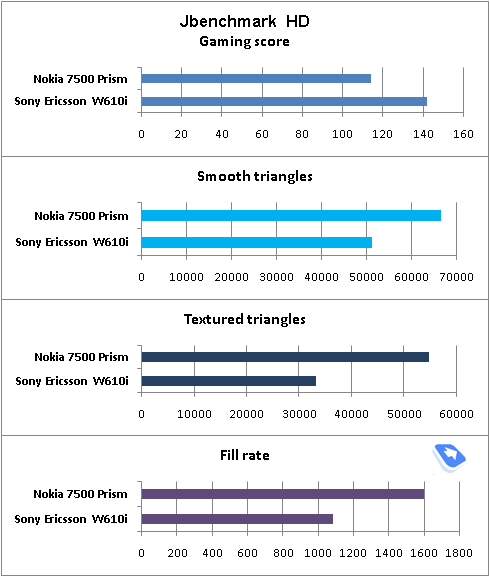

Back to the table of contents >>> Nokia 7500 Prism versus Nokia 7900 Prism
The senior model has a number of edges over the 7500 Prism, justifying its hefty price tag (200 Euro more, so its price starts at the 400 Euro mark). It is a UMTS-enabled model, with the back cover made of anodized aluminum. The 7900 Prism also comes with 1 Gb of storage onboard, which makes it a close sibling to the Nokia 6500 Classic, being in fact one of its variation. Speaking in favor of this guess are the microUSB socket and BL-6P battery. The 7900 is considerably skinnier at 11 mm (against 14,4 of the Nokia 7500). The software differences include event-sensitive light effects for the keypad. The wallpapers are not static either, being all another touch adding more life to the 7900 Prism.
Back to the table of contents >>> Competition
Technically, this model has no direct competition, especially if you approach the problem of choosing a new phone basing on design alone. Apparently, tastes differ, so it is all up to you. But tastes and visual appeals aside, if we look at the functionality alone, that’s the place where a couple of other options pop up on the list. For instance, the Sony Ericsson W610i has similar, in some ways even superior, specifications and trumps the Nokia’s offspring in terms of sonic experience all thanks to its default headphones, and what is more, it is somewhat cheaper as well. I won’t take this liberty and assess their designs, but both products look quite interesting in this sense. In the case of Nokia, the premium you pay for that design is way over the top, making the device not quite adequate price/quality ratio-wise, even though they have made their best to offer the phone at an affordable price.




Back to the table of contents >>> Impressions
The volume of 72-tone polyphony is enough for almost any conditions. It also does fine on the reception front, as it stands up to all other phones of the current generation. The silent alarm is average strength-wise, but can be still felt while the handset is in pocket.
The phone is currently retailing for around 210 Euro or 370-400 USD (in Russia). This is a milestone product for Nokia, its advertising campaign kicks off in October. Nokia has enjoyed great success with its mid-range designer models so far, especially the L’Amour Collection First and Second editions. The Prism follows in their footsteps and will definitely appeal to the broader audience. Is it worth saving some coins, when going for the 7500 instead of the Nokia 7900? The decision is all yours, however the senior model delivers completely different impressions, being a phone of a whole different level, and the price gap is quite justified. On the other hand, there is another solution standing somewhere between these two and with pretty cheap materials used – the Nokia 6500 Classic.
SAR vale – 0.5 W/kg
Related links:
Back to the table of contents >>>
Eldar Murtazin (eldar@mobile-review.com)
Translated by Oleg Kononosov (oleg.kononosov@mobile-review.com)
Published — 11 October 2007
Have something to add?! Write us... eldar@mobile-review.com
|
News:
[ 31-07 16:21 ]Sir Jony Ive: Apple Isn't In It For The Money
[ 31-07 13:34 ]Video: Nokia Designer Interviews
[ 31-07 13:10 ]RIM To Layoff 3,000 More Employees
[ 30-07 20:59 ]Video: iPhone 5 Housing Shown Off
[ 30-07 19:12 ]Android Fortunes Decline In U.S.
[ 25-07 16:18 ]Why Apple Is Suing Samsung?
[ 25-07 15:53 ]A Few Choice Quotes About Apple ... By Samsung
[ 23-07 20:25 ]Russian iOS Hacker Calls It A Day
[ 23-07 17:40 ]Video: It's Still Not Out, But Galaxy Note 10.1 Gets An Ad
[ 19-07 19:10 ]Another Loss For Nokia: $1 Billion Down In Q2
[ 19-07 17:22 ]British Judge Orders Apple To Run Ads Saying Samsung Did Not Copy Them
[ 19-07 16:57 ]iPhone 5 To Feature Nano-SIM Cards
[ 18-07 14:20 ]What The iPad Could Have Looked Like ...
[ 18-07 13:25 ]App Store Hack Is Still Going Strong Despite Apple's Best Efforts
[ 13-07 12:34 ]Infographic: The (Hypothetical) Sale Of RIM
[ 13-07 11:10 ]Video: iPhone Hacker Makes In-App Purchases Free
[ 12-07 19:50 ]iPhone 5 Images Leak Again
[ 12-07 17:51 ]Android Takes 50%+ Of U.S. And Europe
[ 11-07 16:02 ]Apple Involved In 60% Of Patent Suits
[ 11-07 13:14 ]Video: Kindle Fire Gets A Jelly Bean
Subscribe
|

